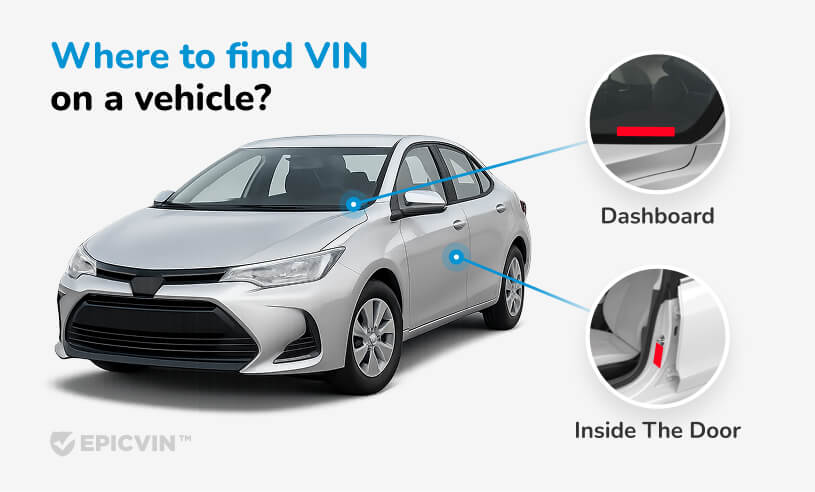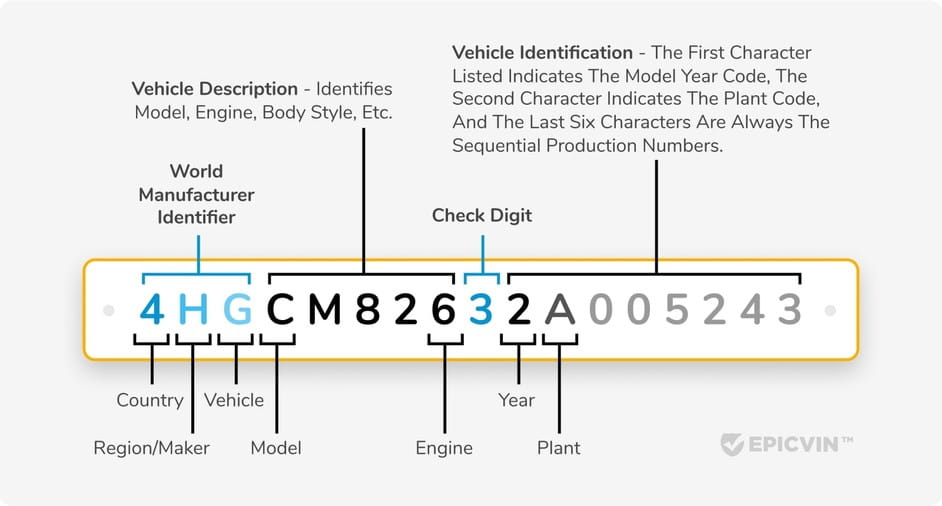
How to Read a VIN Number Like a Pro
From understanding the VIN number breakdown to uncovering a vehicle’s history,...

Free Chrysler VIN Decoder! 🚗 See specs, build sheet, recalls basic history—no sign-up. 🛡️✅ Need accidents, mileage, title? Upgrade in one click.
Looking for the VIN?
Here is there you’ll find it:

Chrysler vehicle identification number is a unique 17-character code established by the ISO Institute in 1981. Every car manufactured after this date carries this identifier, making our VIN decoder essential for verifying specifications, recalls, and security records before purchase.
Decoding your vehicle's VIN takes just several actions with our comprehensive tool.

Your vehicle identification number appears in several standard locations for easy access.
| Key Risk | Impact on Buyers | Mitigation Steps |
|---|---|---|
| Theft Risk | Chrysler models are stolen ~1,600 times/year in the U.S. (NICB data) | Use VIN to confirm theft recovery |
| Unrepaired Safety Recalls | ~25% of Chrysler recalls remain unrepaired when bought used | VIN check against NHTSA before purchase |
| Depreciation Over Time | Chrysler Pacifica loses ~40% value in first 5 years | Check VIN-based price history |
| Odometer Rollback Fraud | Over 20,000 annual rollback cases reported in Chrysler sedans | VIN-based mileage records via NMVTIS |
| Hidden Flood or Salvage History | ~30% listed salvage via VIN checks were flood-related | Inspect VIN history and photos |
Risk Reduction: To minimize risks: Check your VIN number for recall failures, inspect damage through photos, and demand NMVTIS reports plus mileage history.
| Issue | Affected Models, Symptoms, Average Repair Cost |
|---|---|
| Transmission wear/failure | Pacifica 2016–2019, 80–120k mi; slipping gears; ~$2,500 |
| Suspension ball joint failure | Voyager 2017–2020, 60–100k mi; clunking, wander; ~$400 |
| Electrical module faults | Pacifica Hybrid 2020–2023, 50–90k mi; warning lights; ~$800 |

Each character in your vehicle's unique sequence tells a specific story.
There are some other details that Chrysler owners and buyers should know:
Here's how our Chrysler VIN decoder interprets a sample sequence (1A4GJ45R07B210052):
| Symbols | Sample | What It Reveals |
|---|---|---|
| 1 | 1 | The United States as the country of origin |
| 2 | A | Chrysler as a manufacturer |
| 3 | 4 | Passenger car vehicle type |
| 4-8 | GJ45R | Van body style, engine type, restraint system, model line, and trim level |
| 9 | 0 | Check digit for validation |
| 10 | 7 | 2007 model year |
| 11 | B | Assembly plant location |
| 12-17 | 210052 | Individual vehicle serial number |
Year 1991
Make Chrysler
Model Imperial
Fuel Type
Engine 3.8L V-Shaped
Made in USA
Your Chrysler VIN number reveals comprehensive vehicle details through our decoder system.
One look at a Chrysler VIN in our report saves hours of DMV and auction research.— Alex Black, CMO, EpicVIN
Search the sequence in several locations: the dashboard near the windshield, driver's door frame, or vehicle documents.
The VIN reveals the trim level. It typically indicates Stow 'n Go availability.
Yes, the vehicle manufacturer identifier shows the intended market destination.
Fleet codes often appear in specific VIN positions for commercial cars.
The VIN decoder shows original destination and emissions compliance requirements.
Export models may have different validation formulas based on destination markets.
Mexican-built Chrysler models typically start with "3" as the country identifier.
Enter your VIN in our decoder to check active recalls and security notices.
The VIN indicates model year and sequence, but not the specific production date.
Anniversary editions have unique trim codes visible in the vehicle descriptor section.
Discover expert tips, news and advice on buying and maintaining used vehicles

From understanding the VIN number breakdown to uncovering a vehicle’s history,...

Check out how to find out whether a vehicle has been towed or stolen

Bad fuel can quickly turn into expensive car trouble. Here’s what happens when...